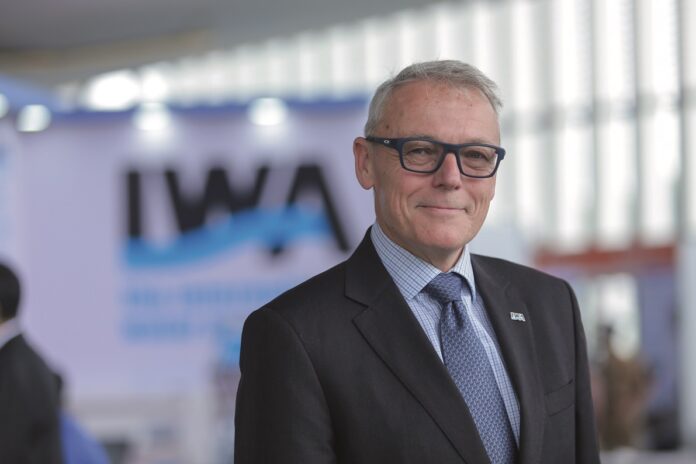‘Bottoms up!’ is one of the many phrases used around the world to announce a toast. Similar versions include ‘Gan Bei!’, which, translated, literally means ‘dry glass’. The words used in such phrases may vary, but the sentiment is often the same – to mark a celebration.
Bottom-up, meanwhile, means something rather different – it is one half of the top-down/bottom-up jargon used widely across management, information technology and any number of realms. Nevertheless, I also associate bottom-up with celebration.
I see bottom-up as a reference to one half of what I consider to be the yin and yang of IWA. Readers will be familiar with the Chinese philosophical concept that describes opposite but interconnected forces. In IWA’s case, I describe those forces – the essence of our association – as being ‘bottom-up’ and ‘top-down’.
‘Top-down’ signifies the strategic direction that is set by the Board, with input from IWA’s Strategic Council and its Governing Members. It includes our centrally set agendas and programmes (for example, the Digital Water Programme or Basins of the Future), global intergovernmental and NGO engagement, and major events such as our biennial World Water Congress.
‘Bottom-up’ is where IWA is truly member-led, where the unique interests and specialist capabilities of the membership can offer leadership, grow professionally and initiate change. One of the principal mechanisms for this bottom-up engagement is the more than 50 IWA Specialist Groups. They cover a wide range of subjects and provide for like-minded IWA members to network and share knowledge. Specialist Groups have their own programme of conferences and other meetings, and regular newsletters. Supported by the IWA Secretariat and through online tools, they facilitate interaction among individual members and create opportunities to generate ideas and pursue partnerships.
The Health Related Water Microbiology Specialist Group is arguably one of the most successful and active in IWA. In June this year, I was pleased to join its WaterMicro23 Conference in Darwin, Australia. The event was a very successful collaboration between the SG Management Committee, a dedicated Programme Committee and the local Australian Host Committee. The event was a resounding success, with 250-plus delegates from 34 countries participating over six days (including pre- and post-workshops). What was truly remarkable, however, was the level of engagement: a strong scientific programme; great spirit of collegiality; commitment to growing knowledge; and many opportunities to forge friendships in a full social programme.
For me, WaterMicro23 is an embodiment of the power and joy of IWA. I commend all those involved in this event, and the many other SG conferences and activities that take place every year.
I encourage all IWA members to not only sign on for Specialist Groups that align with their interests, but to go further: submit a conference paper, nominate for a position on a Management Committee, or volunteer to help organise an event. If WaterMicro23 is any indication – and I know it is – stepping forward will reward one many times over.
The American comedian Groucho Marx once said: “The problem with doing nothing is that you never know when you’re finished.” Our active members certainly can’t be accused of doing nothing – they are the engine of our bottom-up activity. While, sometimes, the work seems not to finish, they will always have the satisfaction of what they have achieved – and that deserves a toast. Bottoms up!
Tom Mollenkopf, President, IWA






